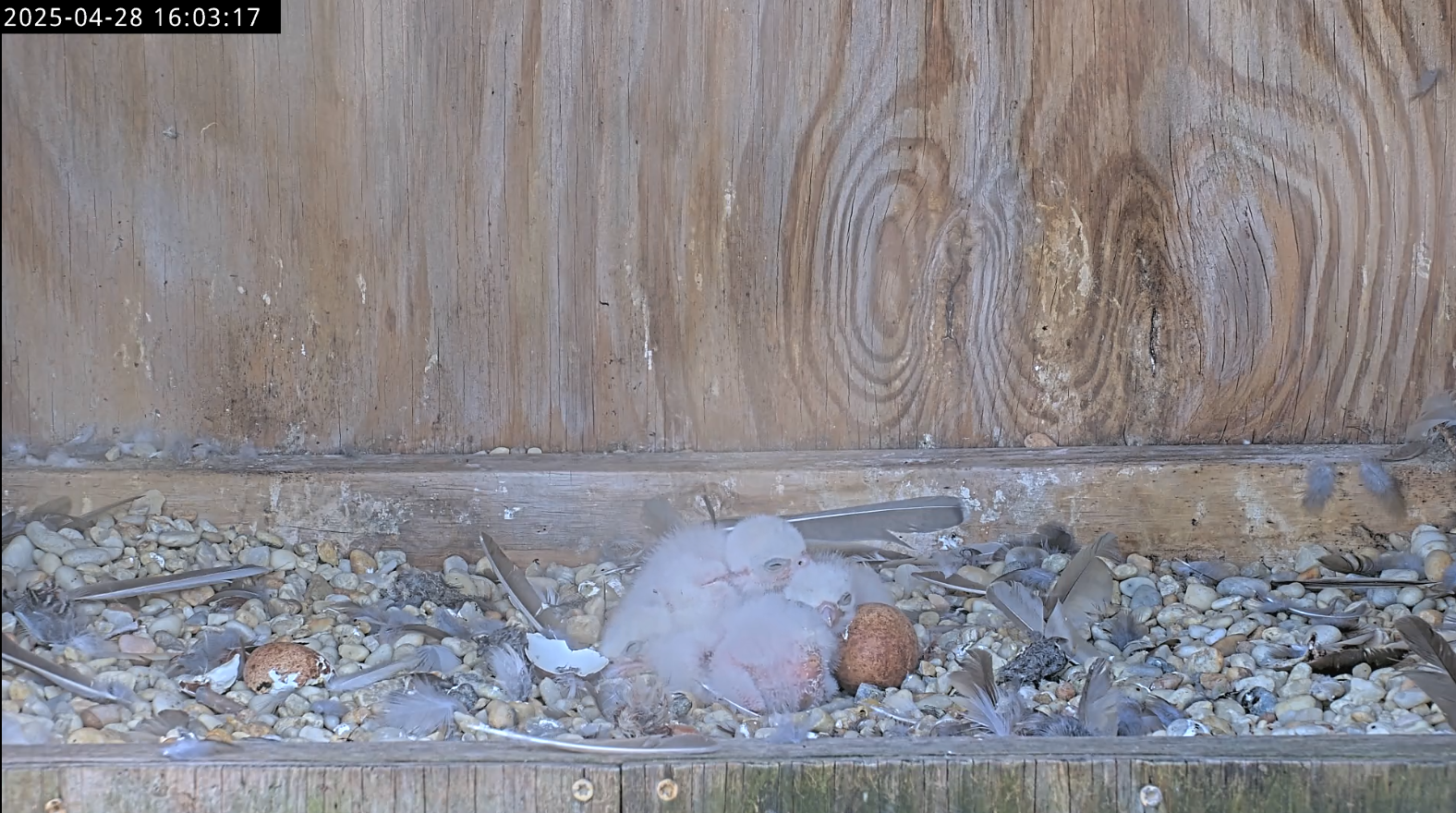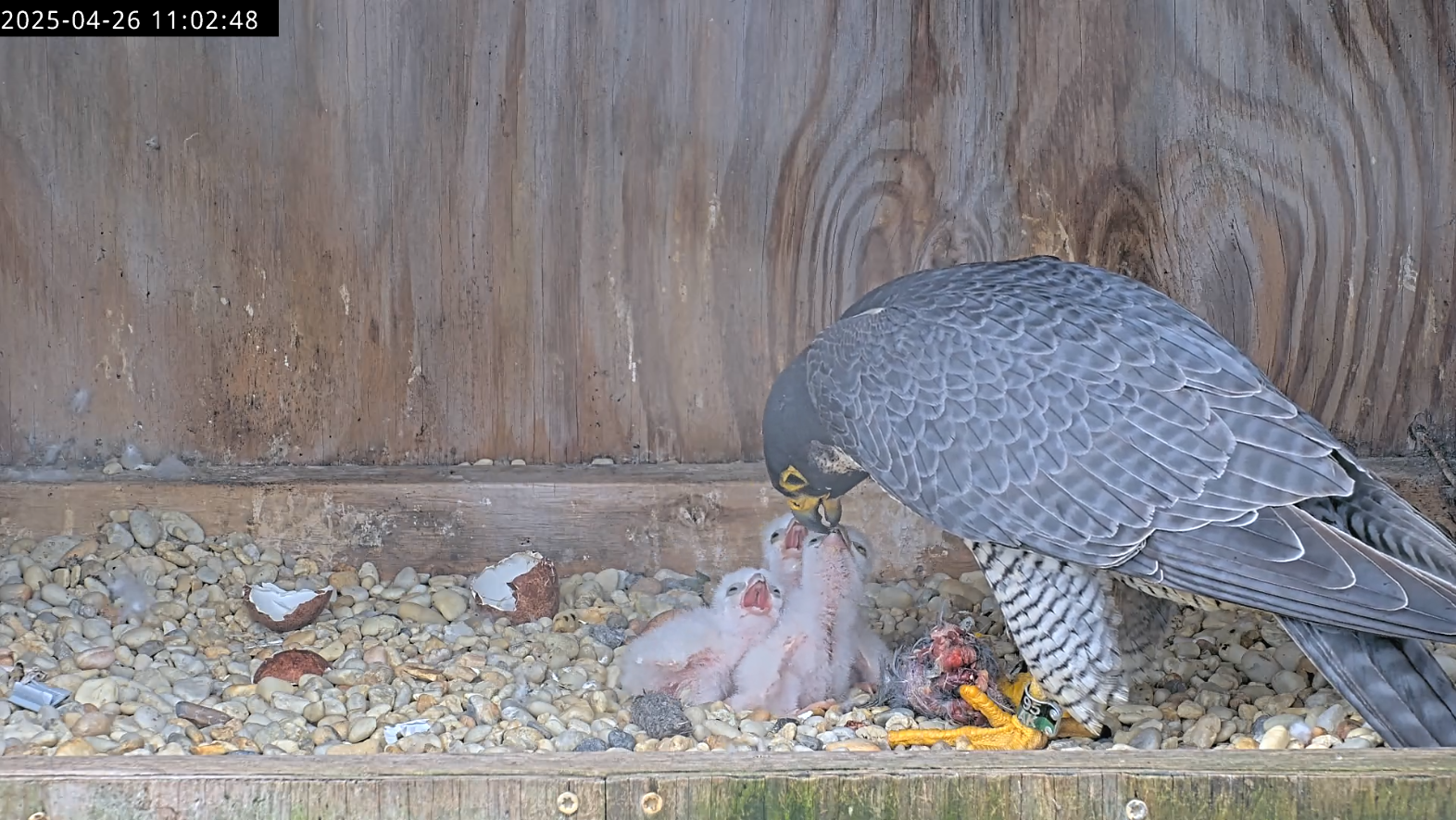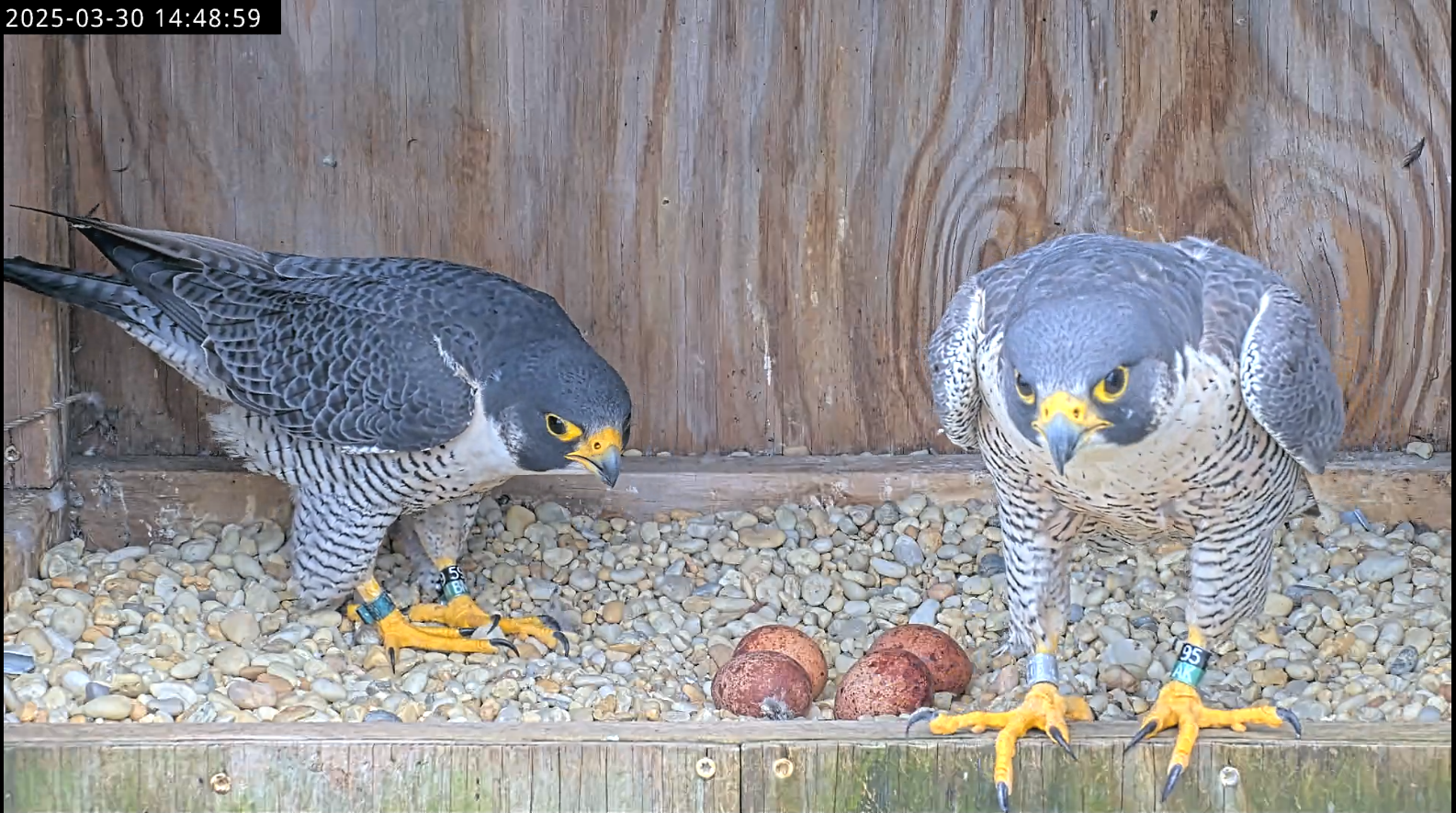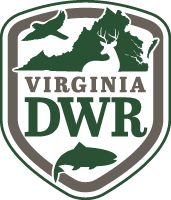Want to see activity from previous days? Click on the circular clock icon in the bottom navigation bar to select a different day to view. These time lapse videos are updated daily and made up of still images captured by the camera every 15 seconds.
What’s Happening at the Nest?
The nest box is a lot more active than it was a week ago thanks to the addition of Richmond’s three newly hatched peregrine falcon chicks! At this point, the chicks have almost doubled in size relative to when they hatched, are sitting up and remaining stable, and opening their eyes. But developing so fast takes a lot of energy, so viewers should still expect to see them spending most of their time sleeping and being brooded by one of the adults.
It has been roughly five days since the first chick hatched and as such we do not expect the remaining egg to hatch. On average, all eggs within a four-egg clutch typically hatch within one to two days’ time. While hatches taking up to eight days have been observed in peregrine nests, this is an incredibly uncommon occurrence and therefore it is unlikely that the final egg will hatch. A host of factors, including infertility, weather, and contaminants may have resulted in this egg being ‘addled’. Unhatched peregrine falcon eggs generally remain in the nest or become cracked and broken during the course of chick rearing. If the unhatched egg is still intact at the time of banding in roughly three-four weeks, it will be collected and may be tested for contaminants.


The female feeds her three newly hatched chicks.
4/26 update at 11:36 AM: A third chick hatched overnight at around 11:30 PM on 4/25. Several meals have been delivered to the chicks since this third hatch.
4/25 update at 12:14 PM: A second chick hatched overnight between 4/24 and 4/25. Both chicks appear to be doing well and received their first meal just before noon on 4/25.
We are happy to report that the as of 5:22 PM on Thursday, April 24th the first falcon chick has hatched. When a chick starts hatching, the first sign is a pip — which is the initial hole the chick makes in its egg. At least one, if not two, of the other eggs are currently pipping and as such we hope to have more chicks in the nest soon.
The act of hatching is a long and energetically demanding process for chicks, as they use an egg tooth (a small knob on top of their bill) to repeatedly peck and push into the pip in the egg, creating a large enough crack that they can eventually break through. This hammering is an exhausting process requiring the chick to take several rests throughout hatching. Overall, the entire process usually takes anywhere from 12 to 18 hours, but in some extreme cases it can take upwards of 72 hours. After the chick has finally hatched, it no longer needs its egg tooth, which falls off several days after its emergence from the egg.
Immediately after hatching, chicks are damp with lots of bare, pink skin exposed. However, within just a few short hours, they dry out taking on a much fluffier appearance due to their white, downy plumage which covers most of their body. Newly hatched falcons weigh approximately 30–40 grams (1.25 ounces) when they first hatch and are unable to fully thermoregulate (maintain core body temperature) for the first two weeks of life. This means the parents will continue to spend time on the nest “brooding” the chicks after they hatch and incubating the remaining eggs.
We will continue to closely monitor this new chick and hope to see the other eggs hatch soon! Read the rest of this post…
The fourth and final egg for 2025 was laid on March 26th and as such the falcons have now moved on to the incubation phase of the nesting season.
Incubation means that Falcon Fans are just about guaranteed to see one of the adults on camera at all times as the eggs are generally not left unattended for extended periods of time during incubation exchanges. Both the male and the female take shifts incubating and thus have developed paired brood patches (featherless patches of skin on the bird’s breast which aid in incubation). By selectively losing these feathers, more direct contact area is created with the skin of the adult bird’s breast and thus the numerous warm blood vessels which are used to maintain the eggs temperature. Although the brood patches are obscured by an outer layer of feathers and therefore not visible to Cam watchers, you may observe the incubating bird shifting its position or shimmying atop the eggs. These movements allow the bird to better position the eggs to ensure maximum contact with their brood patches.
Peregrine falcon eggs are incubated for roughly 33-35 days which means we should expect to see our first signs of hatching around April 24th-April 26th.

The falcons during an incubation exchange. The male, 59/BM, comes in to temporarily relieve the female, 95/AK from sitting atop the eggs.
- Read more updates in the archive…


Internet service to the Falcon Cam provided courtesy of Comcast Business.
The DWR Falcon Cam follows the breeding season of a peregrine falcon pair that nests in downtown Richmond, Virginia. The nest box is located atop the Riverfront Plaza building. If you’re in the area, look up! You may catch a glimpse of the famous birds! We hope each year that the pair will once again choose to nest at this site, so that our camera may provide an educational experience for all to enjoy.


